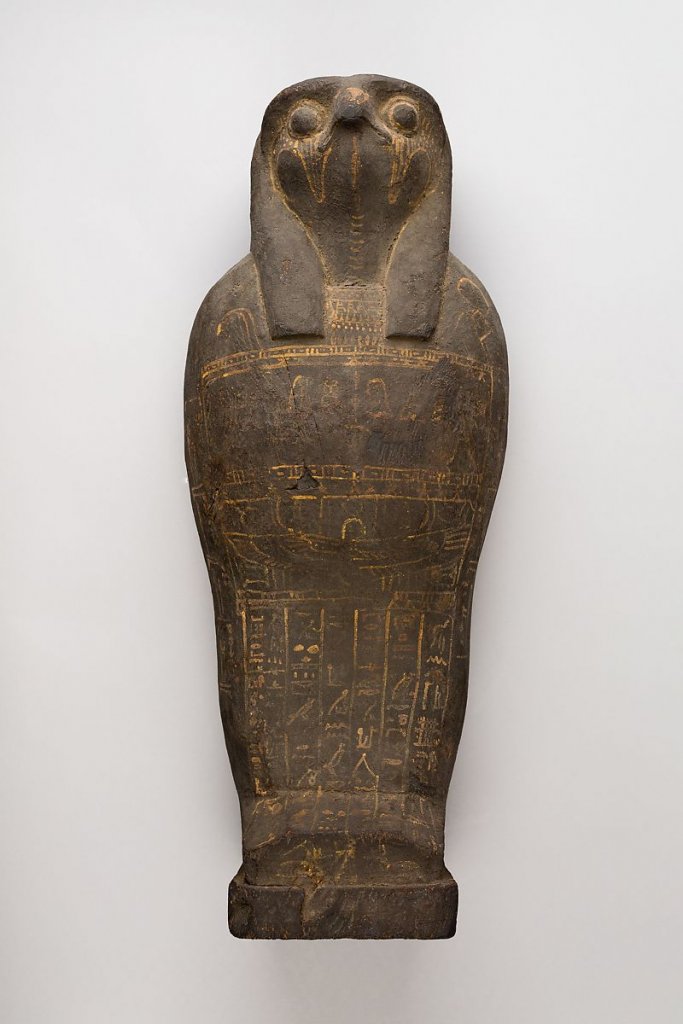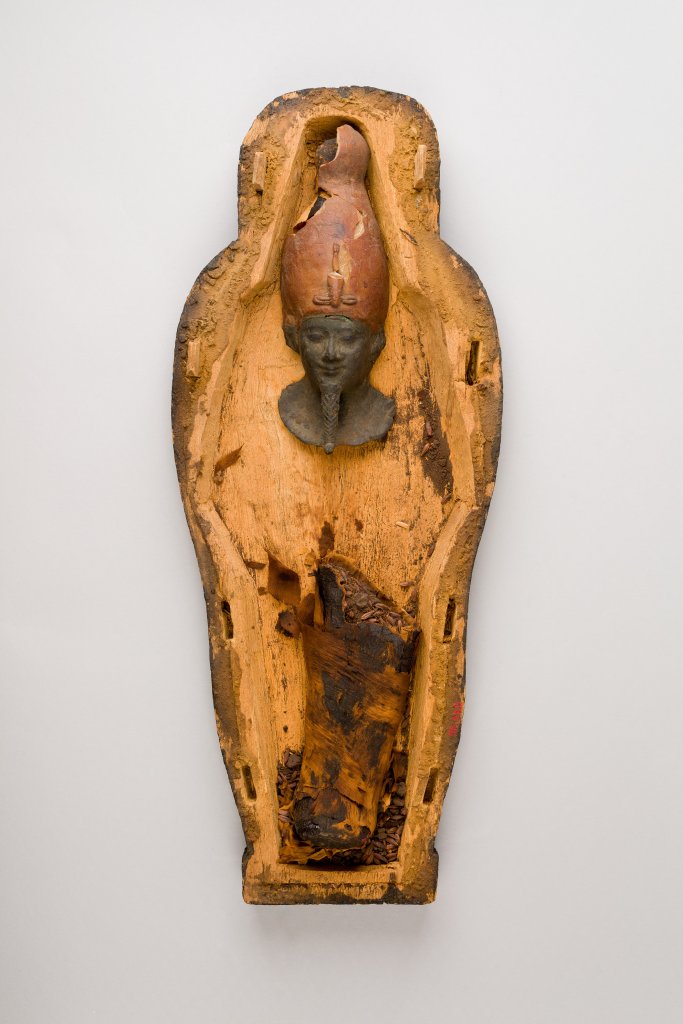Corn Mummy
Flax was primarily used to manufacture linen. Barley was primarily used for beer. Both of these elements are used in grain mummies (sometimes called corn mummies) which can be found in the 18th dynasty (most likely time period for the Exodus).
Priests would take Nile mud mixed with barley and would form and wrap it like a mummified Osiris. They’d even give the mummy a wax face and crown of Osiris and place it in a mini anthropoid coffin! After some time, the seed would germinate and sprout new life – just like the resurrection of Osiris.
Because we find this in the context of the 10 plagues, the purpose of this mention may be a polemic against the god Osiris as well as Nut (goddess of the sky) for the plague of hail.
These falcon-headed coffins do not contain actual mummies but symbolic Osiris mummies stuffed with grain and sand. The falcon head on the coffins and the hieroglyphic text on the painted lid indicate they are associated with the funerary deity Ptah-Sokar-Osiris.
Such coffins and ‘mummies’ were prepared and buried in annual rites at certain centers as part of the mysteries of Osiris. Subsequent germination of the grain would symbolize the possibility of new life offered by Osiris.

See all posts in Glossary
Upcoming Tours
We would love to walk with you in the Holy Land. Here are upcoming opportunities:
Jun 27 — Jul 09, 2024 Egypt & Jordan Walking Tour (easy pace)Led by George DeJong |
All trip dates subject to change.

